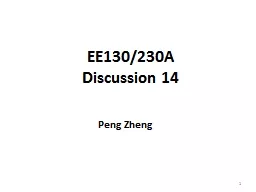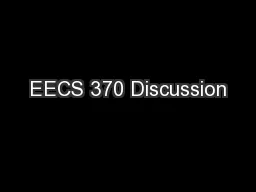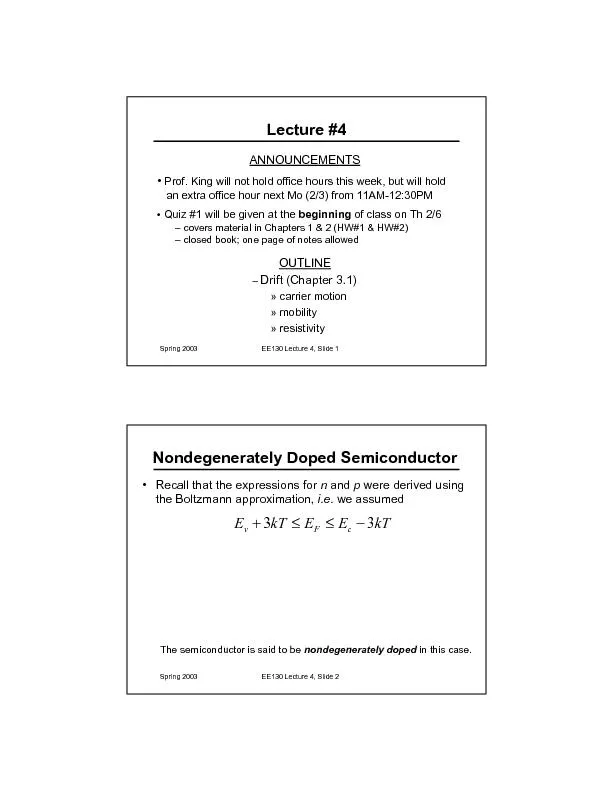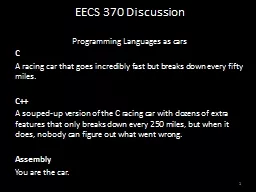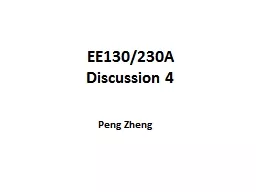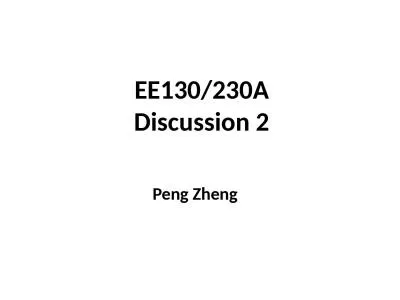PPT-EE130/230A Discussion 14
Author : conchita-marotz | Published Date : 2019-06-22
Peng Zheng 1 Game Plan for IV Derivation Solve the minoritycarrier diffusion equation in each quasineutral region to obtain excess minoritycarrier profiles different
Presentation Embed Code
Download Presentation
Download Presentation The PPT/PDF document "EE130/230A Discussion 14" is the property of its rightful owner. Permission is granted to download and print the materials on this website for personal, non-commercial use only, and to display it on your personal computer provided you do not modify the materials and that you retain all copyright notices contained in the materials. By downloading content from our website, you accept the terms of this agreement.
EE130/230A Discussion 14: Transcript
Download Rules Of Document
"EE130/230A Discussion 14"The content belongs to its owner. You may download and print it for personal use, without modification, and keep all copyright notices. By downloading, you agree to these terms.
Related Documents

